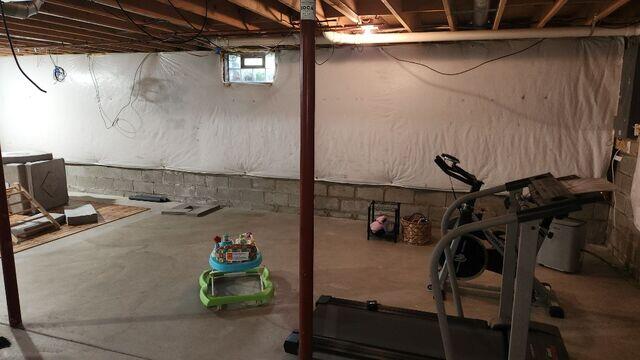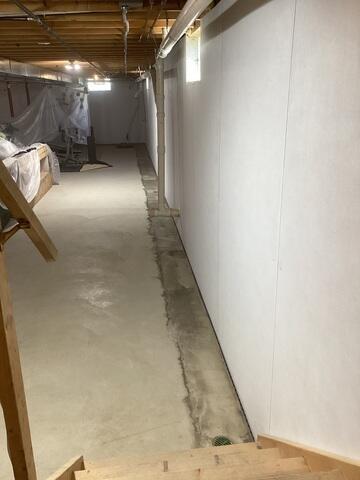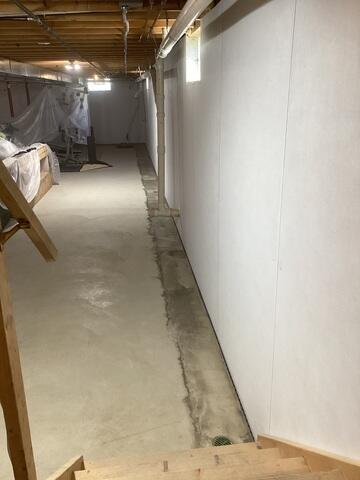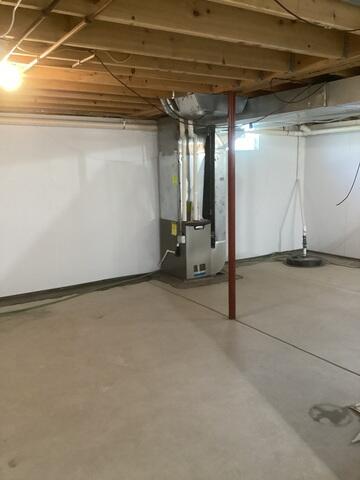
The Basement Before
The basement walls were made of cement blocks, which for us means that this more porous material will seep or slowly leak water over time due to something called hydrostatic pressure. This pressure originates from a buildup of moisture in the ground surrounding the house's foundation. As there is no outlet for this moisture, it pushes water into and through the cement, ultimately ending up in the basement.

BrightWall Basement Wall Panels
To combat the water coming through the walls, our Team installed BrightWall Basement Wall Panels on all the walls. This rigid white plastic board directs any water seepage down to the perimeter, which is installed below. This creates an effective moisture and vapor barrier for the space as well.

FlowGuard Installed
Since no original interior drainage system was installed and the floors consisted of a very thin layer of concrete, a FlowGuard® thin floor weeping tile system was installed along the perimeter of the basement. You can see the top of this perimeter drainage system, which will collect water from the walls at the wall flange. Meanwhile, the drain system underneath helps direct the water to the sump pump.

Finished Basement
The new drainage system will flow to the existing sump pump setup Cheryl originally had. Now her basement is fully waterproofed and ready for the next step in finishing it.



